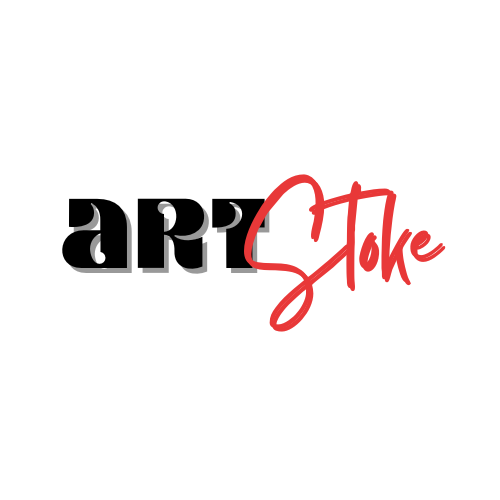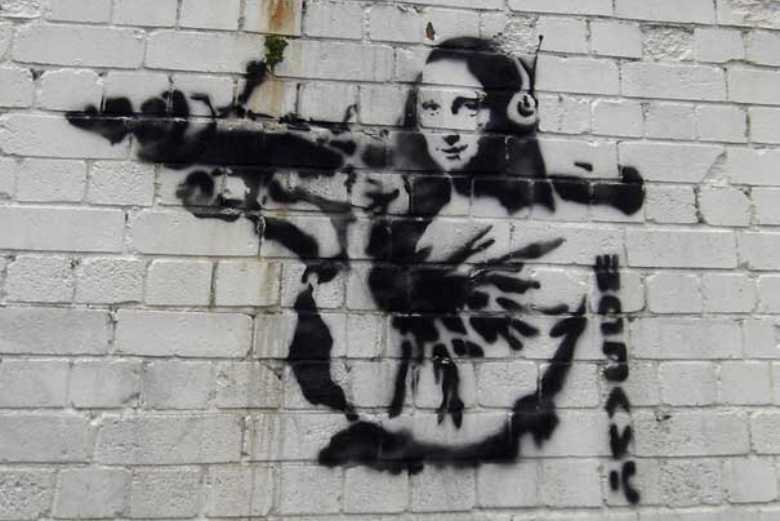In the ever-evolving world of art, the emergence of digital platforms and blockchain technology has given rise to a new form of artistic expression: CRYPTOART. This digital revolution bears striking parallels to the disruptive and boundary-pushing nature of street art, epitomized by the enigmatic and provocative works of Banksy.
As we navigate the transition from the physical streets to digital wallets, it becomes clear that while both street art and CRYPTOART share a common spirit of rebellion and democratization, they also diverge in significant ways. This exploration delves into the synergies and divergences between Banksy’s iconic street art and the burgeoning landscape of CRYPTOART, revealing how each art form challenges conventions, engages audiences and reshapes the cultural dialogue.
Banksy
Subversion (from Latin subvertere ‘overthrow’) refers to a process by which the values and principles of a system in place are contradicted or reversed in an attempt to sabotage the established social order and its structures of power, authority, tradition, hierarchy, and social norms.
Banksy is one of the most influential and well-known street artists in the world. He became famous as a street artist due to a combination of his unique style, provocative and politically charged messages, and the mystery surrounding his identity.
Distinctive Style
Banksy’s art often features distinctive stencil techniques, allowing for quick and precise execution. His works are easily recognizable and have a consistent visual style.

Social and Political Commentary
Banksy’s pieces frequently address themes such as anti-authoritarianism, anti-war sentiments and critiques of capitalism and consumerism. This resonated with many people and garnered widespread attention.
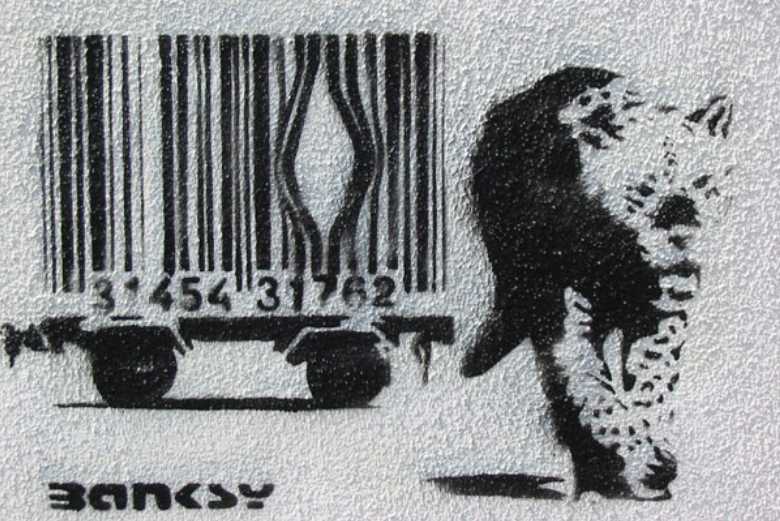
Mystery and Anonymity
Banksy’s true identity has never been publicly confirmed, adding an element of intrigue and mystique to his persona. This anonymity has fuelled curiosity and speculation, increasing his notoriety.
Public Space Art
By creating art in public spaces, Banksy reached a broad audience that might not typically visit art galleries or museums. His choice of location often adds context and meaning to the work, making it more impactful.
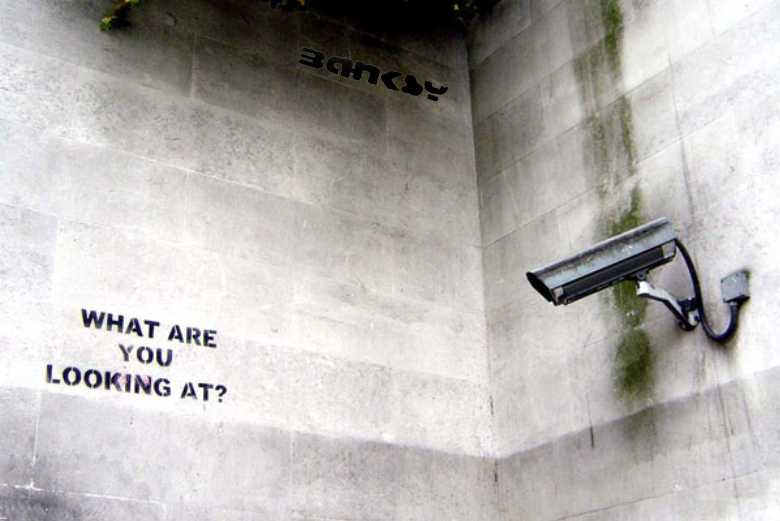
Controversial and Daring Acts
Banksy is known for his bold, edgy and often illegal actions such as painting on the barrier wall between Israel and Gaza (Palestine) and sneaking pieces into prestigious museums. These acts generate media coverage and public discussion.
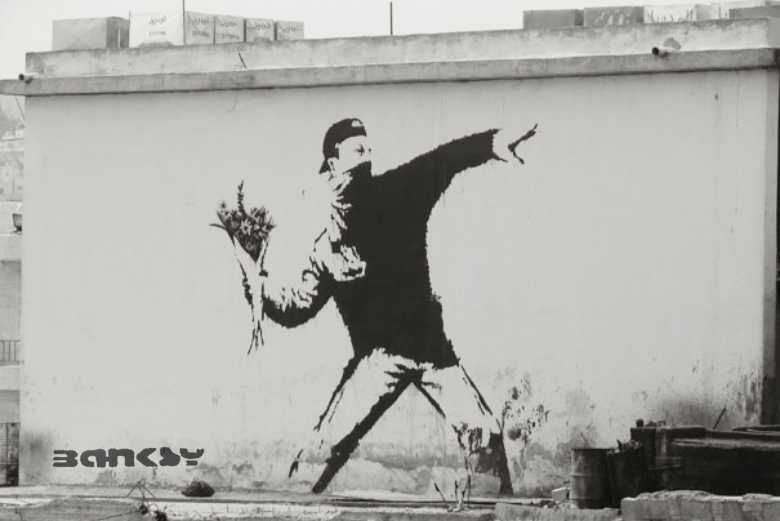
Media and Viral Spread
Banksy’s work has been widely covered by traditional media and shared extensively on social media platforms, amplifying his reach and influence.
Cultural Relevance
Banksy’s art captures the zeitgeist of the times, addressing current social and political issues, which keeps his work relevant and topical.

Synergies
Street art and CRYPTOART converge at the intersection of creativity, technology, and cultural commentary, both pushing the boundaries of what art can be, and how it can be experienced.
Democratization of Art
Street art is accessible to the public, created outside traditional art venues and making art available to a broader audience without the need for gallery spaces. CRYPTOART allows artists to reach a global audience directly, bypassing traditional gatekeepers like galleries and auction houses. This democratizes art ownership and creation, giving artists more control over their work and its distribution.
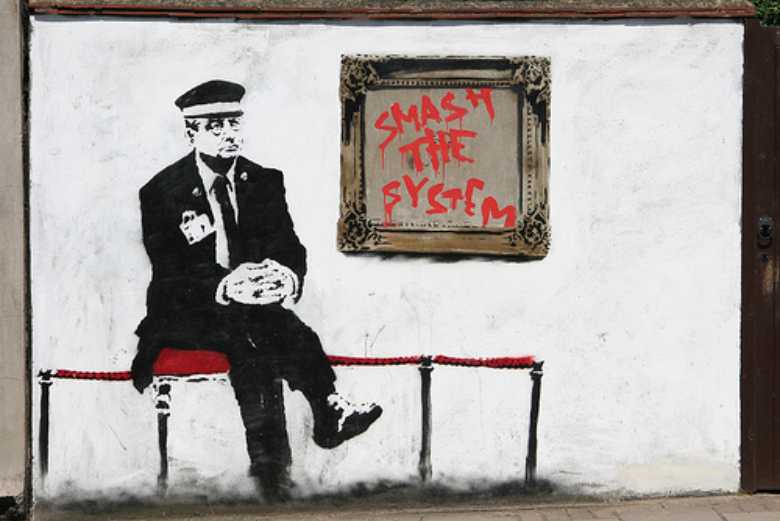
Anonymity and Pseudonymity
Many street artists like Banksy work under pseudonyms to protect their identities and maintain a sense of mystery. It’s also common in the CRYPTOART space for artists and collectors to operate under pseudonyms, allowing them to maintain privacy and a distinct digital persona.
Rebellion and Counterculture
Street art has roots in rebellion and counterculture, challenging and subverting societal norms and political systems. The CRYPTOART movement similarly embodies a rebellious spirit, challenging traditional financial systems and the traditional art market. It promotes decentralization and empowers artists through blockchain technology.
Innovation and Creativity
Street artists experiment with new techniques, mediums, and locations, pushing the boundaries of what is considered traditional art. Crypto artists are at the forefront of digital innovation, exploring new forms of expression through digital tools, interactive experiences, and smart contracts that can dictate the terms of use and resale.
Community and Collaboration
The street art community is often tight-knit, with artists collaborating on murals and projects, and sharing techniques and ideas. The CRYPTOART space is also highly collaborative, with artists frequently working together on joint projects, participating in virtual galleries, and engaging with a global community of creators and collectors.
Cultural Impact
Street art has a significant cultural impact, mirroring and influencing social and political discourse. CRYPTOART too, is shaping the digital cultural landscape, influencing how art is created, owned, and experienced in the digital age.
Divergences
Street art and CRYPTOART, while sharing many synergies, also diverge in several ways.
Medium and Physicality
Street art is inherently physical, created in public spaces using materials like paint, spray paint, and stencils. Its physicality is integral to its impact and interaction with the environment. CRYPTOART exists in the digital realm, created using digital tools and platforms. NFTs and digital art are non-physical assets. The experience of CRYPTOART is primarily through screens and digital interfaces.

Permanence and Ephemerality
Street art is often ephemeral, subject to weather, vandalism, or removal by authorities. Its temporary nature can add to its significance and urgency. CRYPTOART is stored on the blockchain, where it can exist indefinitely. The permanence of NFTs and digital art contrasts with the transient nature of street art.
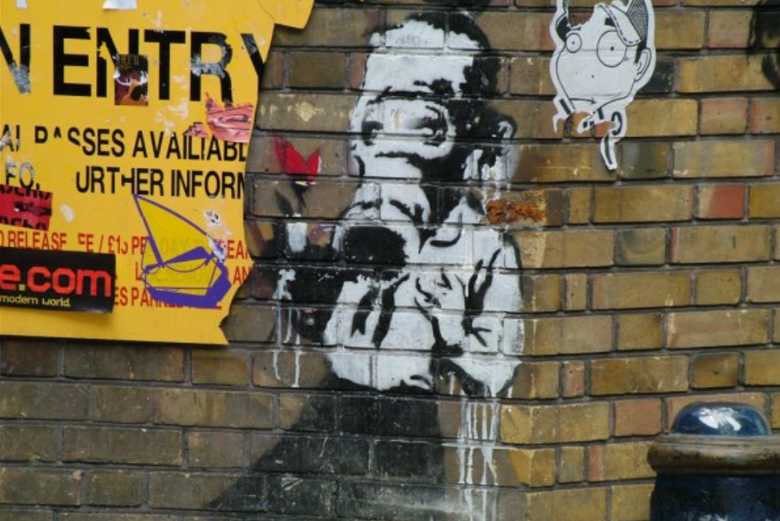
Audience Interaction
The audience for street art is the general public, who encounter the art in their daily environments. The interaction is immediate and often accidental. The audience for CRYPTOART is typically more niche, composed of digital art enthusiasts and crypto investors who seek out these works online. Interaction is more deliberate and requires access to digital platforms.
Ownership and Distribution
Ownership of street art is complex since it’s created in public spaces. The artist rarely retains control over the artwork once it’s created, and it can be painted over or altered by others. NFTs allow for clear ownership and easy distribution of digital art. Artists can sell, track, and receive royalties from their works through smart contracts, maintaining control over their digital creations.
Monetization and Market
Monetization of street art is challenging, as it’s not typically sold in traditional ways. Artists may gain commissions or increase their reputation leading to gallery shows or print sales. CRYPTOART can be directly monetized through NFT sales on blockchain marketplaces. Artists can earn from initial sales and receive a percentage of secondary sales as royalties creating ongoing revenue opportunities.
Legal and Ethical Considerations:
Street art often operates in a legal grey area, with many works created without permission. This can lead to legal issues and debates about property rights and vandalism. CRYPTOART operates within a different legal framework, primarily dealing with issues related to digital copyright and intellectual property. The legality is more straightforward, though still evolving.

Accessibility and Tools
Creating street art requires physical tools (paint, stencils, etc.) and physical presence in specific locations. It often involves navigating risks like police intervention or hazardous environments. Creating crypto art requires digital tools (software, hardware) and access to the internet and blockchain platforms. The risks are more related to cybersecurity and digital rights management.
Context and Environment
The context and environment are integral to the meaning and impact of street art. The location often adds layers of interpretation and relevance to the artwork. The context for crypto art is primarily virtual, with the digital environment and platform influencing the experience. While it can be displayed in physical spaces, its primary context is online.
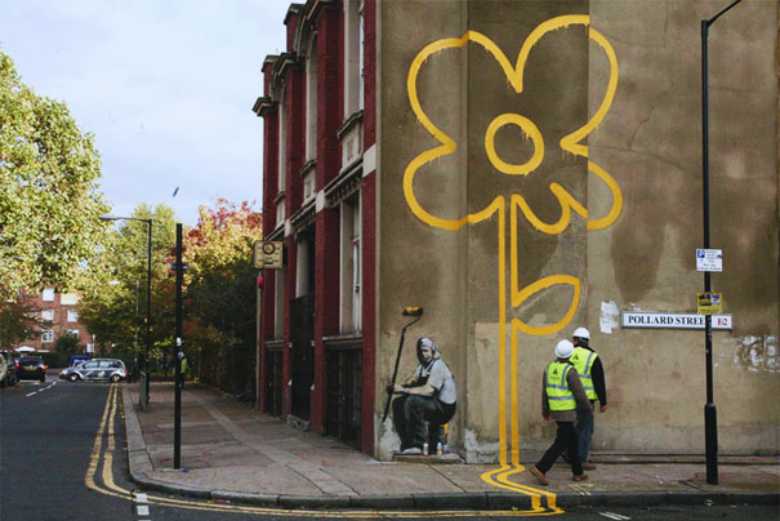
These divergences highlight the unique characteristics and challenges of each art form, demonstrating how they each carve out distinct spaces within the broader art world.
In Closing
As we journey from the vibrant, graffiti-laden streets to the innovative realm of digital canvases, the dialogue between street art and CRYPTOART continues to unfold. Banksy’s subversive murals and the revolutionary nature of NFTs both challenge the status quo, offering new perspectives on ownership, value, and artistic expression. While their mediums and methods may differ, the underlying ethos of both art forms remains strikingly similar: a commitment to pushing boundaries and redefining what art can be. By embracing both the tangible and the digital, we can appreciate the rich tapestry of contemporary art, recognizing that the walls and wallets of our world are more interconnected than ever before.
